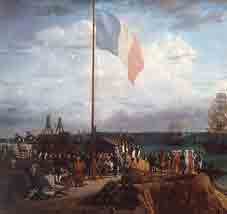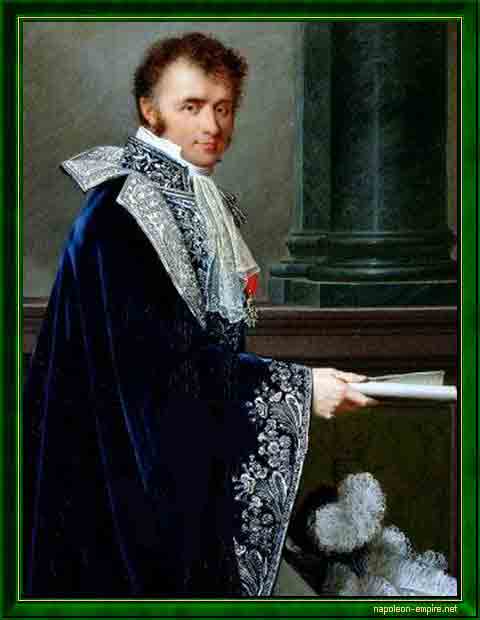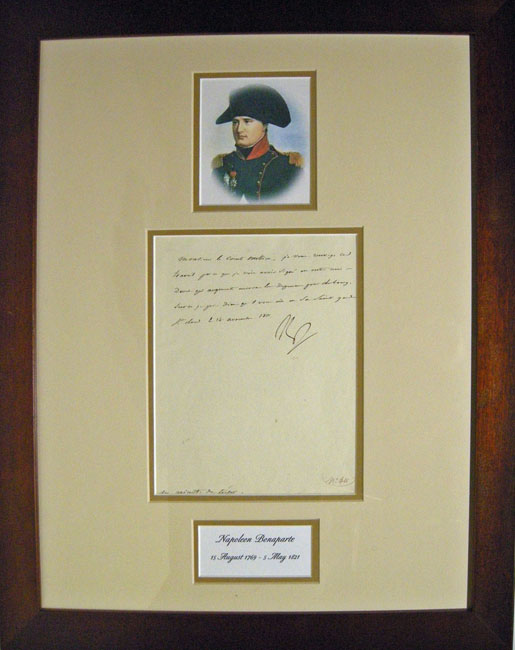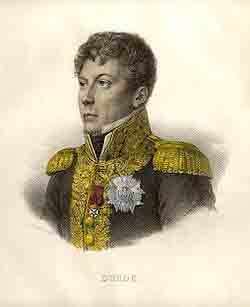Arguably translated for the first time two centuries. In English translation it reads thus:
“Monsieur Le Comte Mollien, I am returning the / work because I believe I have included another name / Duroc which increases even more the expenses for Cherbourg. / [ Expression] 'I pray God will keep you safe.'/ St. Cloud, 14 November 1811/ To Minister of Treasury.”
In good condition and handsomely presented with an inserted oval 1/4 length reproduction portrait of the Emperor taken from a full-length portrait and reversed.

Napoleon & Marie- Louise reviewing fleet and defences at Cherbourg May 1811
Napoleon Bonaparte Born 15 August 1769 – 5 May 1821) was a military and political leader during the latter stages of the French Revolution. As Napoleon I, he was Emperor of the French from 1804 to 1815. His legal reform, the Napoleonic Code, has been a major influence on many civil law jurisdictions worldwide, but he is best remembered for the wars he led against a series of coalitions, the so-called Napoleonic Wars, during which he established hegemony over much of Europe and sought to spread revolutionary ideals.

Nicolas-François Mollien Born on February 28th, 1758 in Rouen, Normandy, France. - April 20th, 1850 in Paris.
Minister of the Treasury from 1806 to 1814.
French financier. The son of a merchant, he showed ability, and entered the ministry of finance were he became a senior figure. In 1808 Mollien was created a count. He soon came to see the impossibility of the measures termed collectively the ‘Continental System’ but his warnings on that subject were of no avail. The result was the blockade of the French ports, and ultimately the peninsula war. After the first abdication of the emperor (April 11, 1814), Mollien retired into private life, but took up his ministerial duties at the appeal of Napoleon during ‘The Hundred days’. He semi-retired following Napoleon's defeat and he was the penultimate surviving minister of Napoleon Bonaparte's cabinet.







